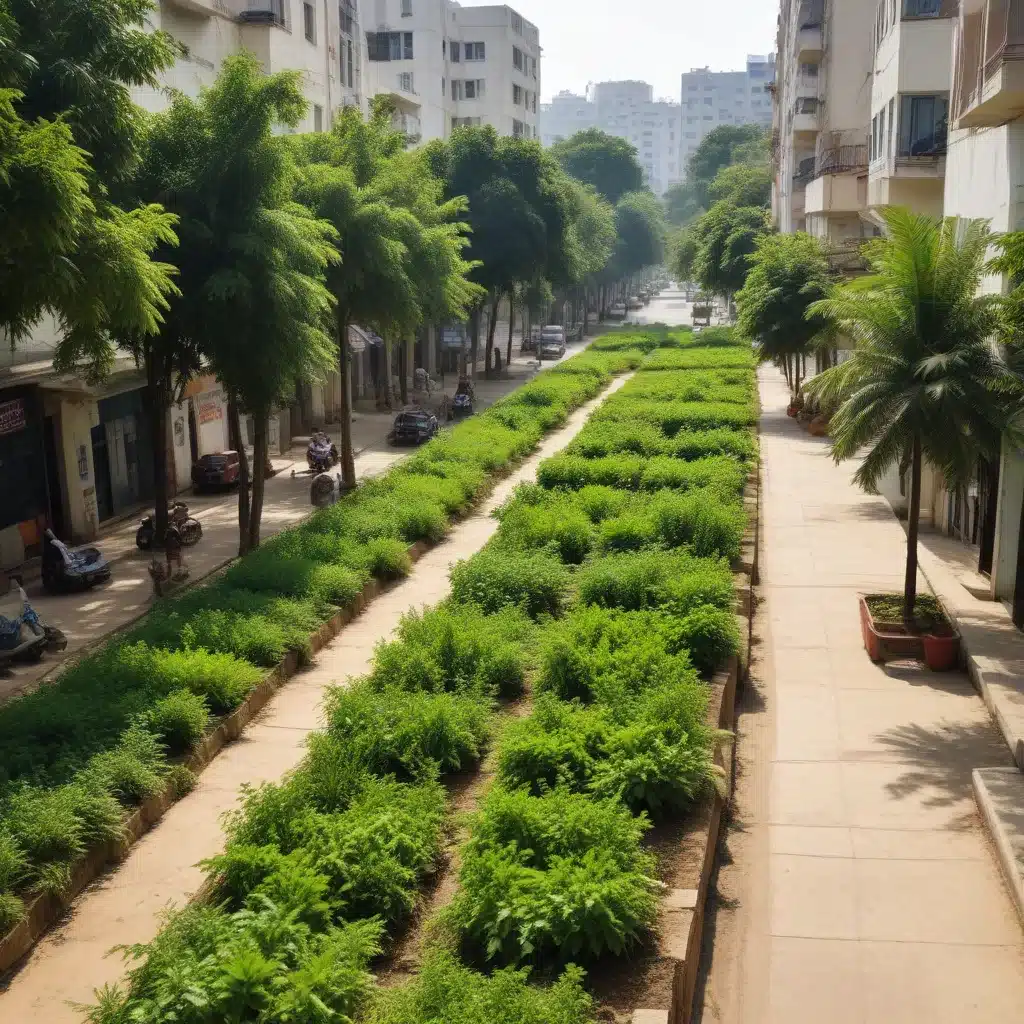
The Urgency of Addressing Urban Heat Islands
As the world rapidly urbanizes, cities are facing an increasingly pressing challenge: the urban heat island (UHI) effect. This phenomenon, where urban areas experience significantly higher temperatures compared to surrounding rural or suburban regions, is a growing concern for the city of Hyderabad, India. The UHI effect is exacerbating the impact of heatwaves, posing serious threats to urban livelihoods, public health, and environmental well-being.
Hyderabad, the capital city of Telangana state, has been experiencing a concerning rise in temperatures due to its expanding built-up areas, reduced green spaces, and increased anthropogenic activities. The city’s landscape, dominated by concrete structures, asphalt roads, and limited vegetation, absorbs and radiates heat, creating a micro-climate that can be several degrees warmer than the surrounding areas. This trapped heat not only contributes to discomfort and health risks for residents but also places a significant burden on the city’s energy infrastructure, as the demand for cooling increases.
Harnessing the Cooling Power of Blue-Green Spaces
To address the pressing issue of the UHI effect in Hyderabad, urban planners and policymakers must explore innovative, nature-based solutions that harness the cooling potential of blue-green spaces. These spaces, which include parks, gardens, water bodies, and other natural or semi-natural areas, play a crucial role in mitigating the UHI effect and creating a more sustainable, resilient urban environment.
Recent studies have highlighted the significant cooling effect of blue-green spaces in Hyderabad and other Indian cities. By leveraging remote sensing techniques and Google Earth Engine, researchers have been able to quantify the impact of these spaces on land surface temperatures (LST) and the overall UHI.
One such study, conducted in the city of Bhubaneswar, found that areas with a higher presence of blue-green spaces, as indicated by the Normalized Difference Vegetation Index (NDVI) and Modified Normalized Difference Water Index (MNDWI), experienced significantly lower surface temperatures compared to the surrounding built-up areas. This correlation underscores the importance of strategic interventions to increase the coverage and connectivity of these cooling oases within the urban fabric.
Strategies for Sustainable Urban Greening
To effectively mitigate the UHI effect in Hyderabad, a multifaceted approach to sustainable urban greening is required. Here are some key strategies that urban planners and policymakers should consider:
1. Expanding Green Spaces
Increasing the overall coverage of green spaces, such as parks, gardens, and urban forests, is a critical measure. These spaces not only provide cooling through evapotranspiration and shading but also improve air quality, enhance biodiversity, and promote physical and mental well-being among residents.
2. Optimizing Access to Water Bodies
Hyderabad’s network of lakes, ponds, and other water bodies can be leveraged to enhance the cooling effect. Improving the water quality, restoring the natural hydrology, and ensuring public access to these blue spaces can significantly contribute to lowering the UHI.
3. Integrating Water-Sensitive Design
Implementing water-sensitive urban design principles can help mitigate the UHI effect while also addressing broader water management challenges. This includes strategies like permeable surfaces, bioswales, and green roofs that integrate vegetation and water management systems into the built environment.
4. Promoting Urban Agriculture
Encouraging the development of urban farms, community gardens, and vertical farming initiatives can not only provide local food sources but also introduce more greenery and evaporative cooling into the urban landscape.
5. Incentivizing Private Sector Participation
Engaging the private sector through incentives and policy frameworks can catalyze the implementation of sustainable urban greening initiatives. This could include tax breaks, subsidies, or recognition programs for businesses that incorporate green infrastructures or implement cooling strategies.
Fostering Community Engagement and Advocacy
Addressing the UHI effect in Hyderabad requires a collaborative effort that involves not only policymakers and urban planners but also the local community. By fostering community engagement and advocacy, the city can harness the collective power of its residents to drive sustainable change.
Community Engagement Strategies:
– Organizing public awareness campaigns to educate residents on the importance of urban greening and the UHI effect
– Establishing community-based initiatives, such as tree-planting programs or neighborhood garden projects, to encourage active participation in greening efforts
– Implementing participatory planning processes that allow residents to have a voice in the design and implementation of urban green spaces
Advocacy Efforts:
– Collaborating with civil society organizations and local advocacy groups to amplify the need for sustainable urban greening policies
– Engaging with policymakers and elected officials to ensure that UHI mitigation and urban greening are prioritized in the city’s development agenda
– Advocating for increased funding and resources dedicated to the implementation of nature-based solutions and green infrastructure projects
By integrating these community-driven approaches with the technical and policy-level strategies, Hyderabad can create a comprehensive framework to address the UHI effect and build a more sustainable, resilient, and livable urban environment for its residents.
Conclusion: The Path Forward
Addressing the urban heat island effect in Hyderabad is a critical challenge that requires a multifaceted, collaborative approach. By harnessing the power of blue-green spaces, implementing innovative urban greening strategies, and fostering community engagement and advocacy, the city can mitigate the impacts of rising temperatures and create a more sustainable, resilient, and livable urban environment for all.
As the Joint Action for Water blog has consistently advocated, sustainable water management and environmental stewardship are essential components of building thriving, equitable communities. The strategies outlined in this article align with these principles, demonstrating how urban greening can be a powerful tool in addressing the pressing issues of climate change, public health, and environmental justice.
By taking bold action and embracing nature-based solutions, Hyderabad can lead the way in sustainable urban development and serve as a model for other cities grappling with the challenges of the urban heat island effect. Together, we can create a future where cities are not only economically prosperous but also environmentally resilient, providing a high quality of life for all.

